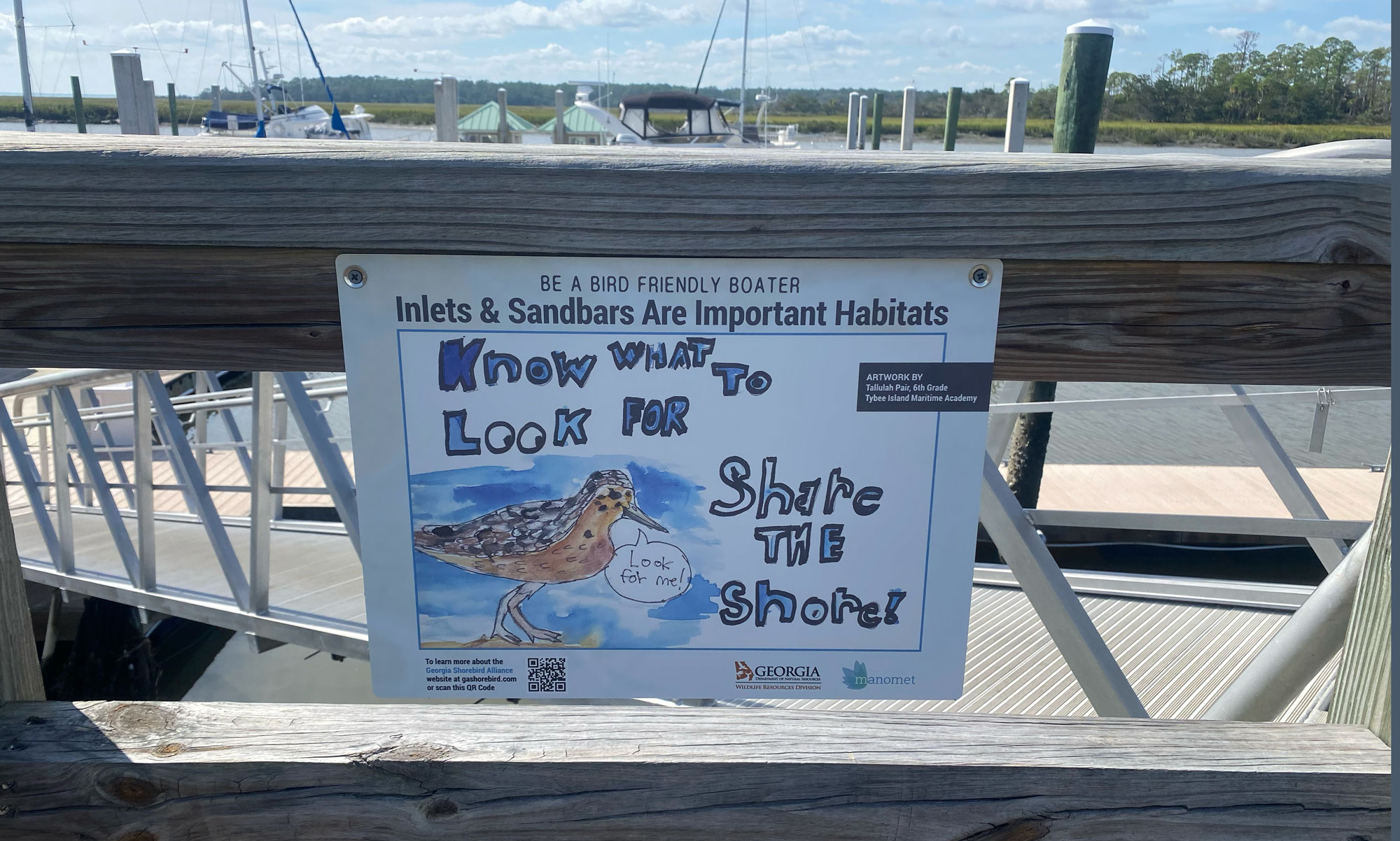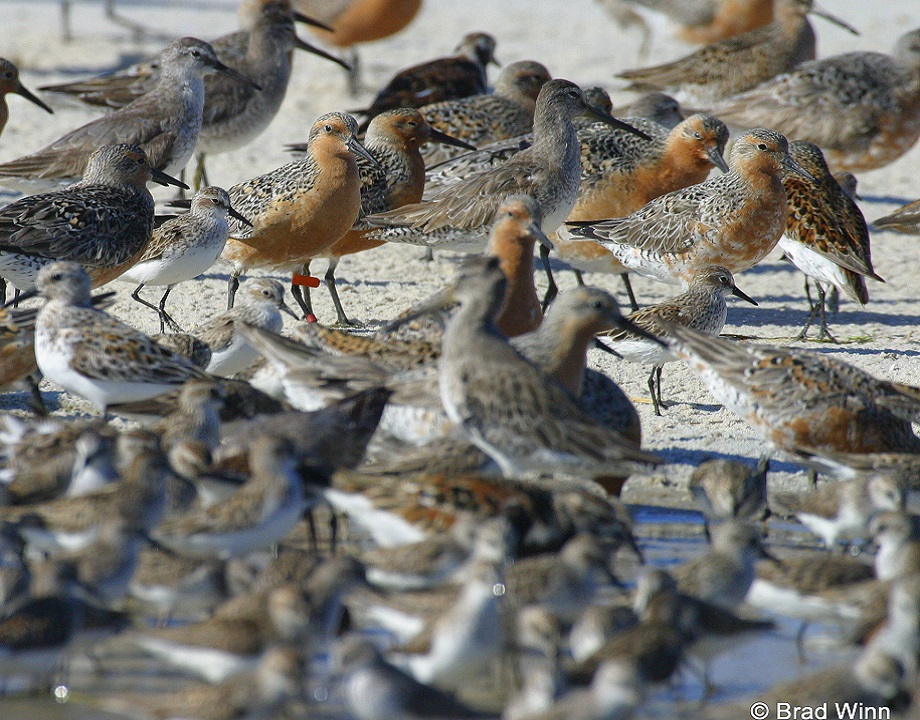
Allie Hayser
Shorebird Technician, Georgia Bight Shorebird Conservation Initiative
The Georgia Bight Shorebird Conservation Initiative has been working with the local community to reduce disturbance to shorebirds in remote sites along the Georgia Coast. All species of shorebirds rely on the coastline to rest and feed. The Georgia coast hosts about 300,000 shorebirds annually and they utilize various habitats and food resources throughout the year. Long distance migratory shorebirds, like Red Knots, stopover in the spring before they make their flight to their arctic nesting grounds. Short distance migratory shorebirds, like American Oystercatchers and Wilson’s Plovers, nest along sandbars, barrier island dunes, and shell rakes from spring through summer.
In the Georgia Bight, recreational boaters and shorebirds share the same favorite spots: remote, scenic places. While recreational use of these habitats could reduce shorebird’s ability to feed, rest or nest, it also provides us with a chance to build collaboration and a shared sense of pride in these unique areas with local residents.
Over the past two years, Abby Sterling, Director, Georgia Bight Shorebird Conservation Initiative, and I have been visiting a host of audiences of all ages to start the conversation on sharing the shore. Those groups have included school groups, libraries, homeschool groups, and boating clubs with the continuing goal of educating community members and building support for our shared work.


In schools, students at the Tybee Island Maritime Academy learned about shorebird disturbance and created artwork to educate boaters about shorebird habits and habitat – this unique (and creative!) signage is being posted at marinas and boat ramps along the Georgia coast! These signs are helping raise awareness among boaters and beachgoers on how (and why) to give shorebirds space.
We’ve also designed informational signage to promote shorebird habitat conservation with input from our partners at the Georgia Department of Natural Resources, The signs were printed with support from the Georgia Ornithological Society and we’re happy to report that marina owners and local municipalities who oversee boat ramps have been enthusiastic supporters of this work, and have been helping us spread the word and grow community support for shorebird conservation along the Georgia Coast.
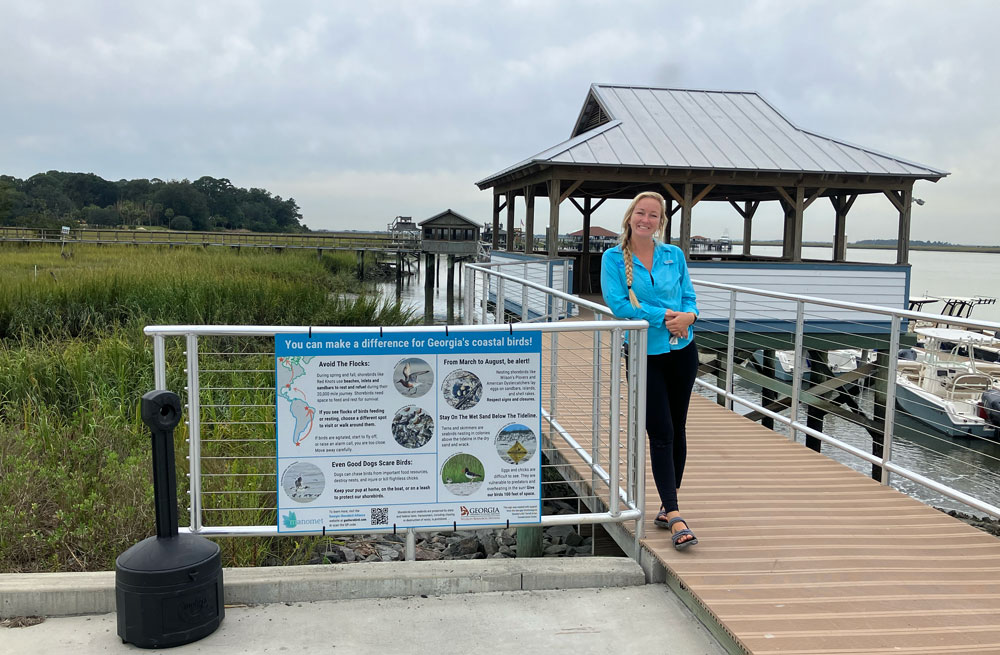
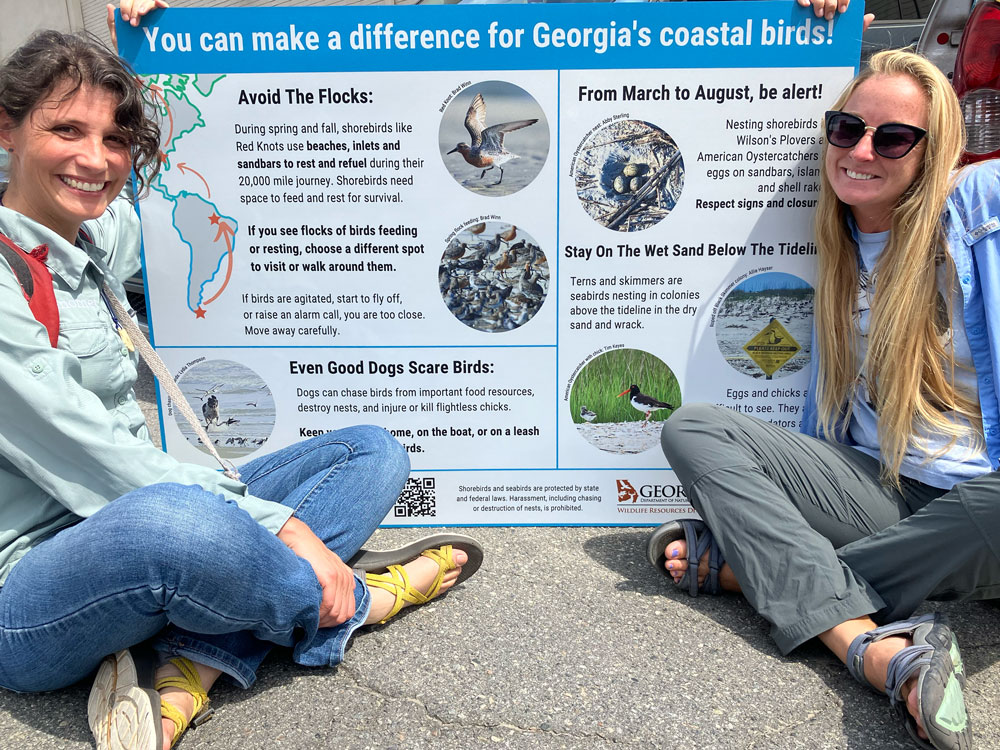
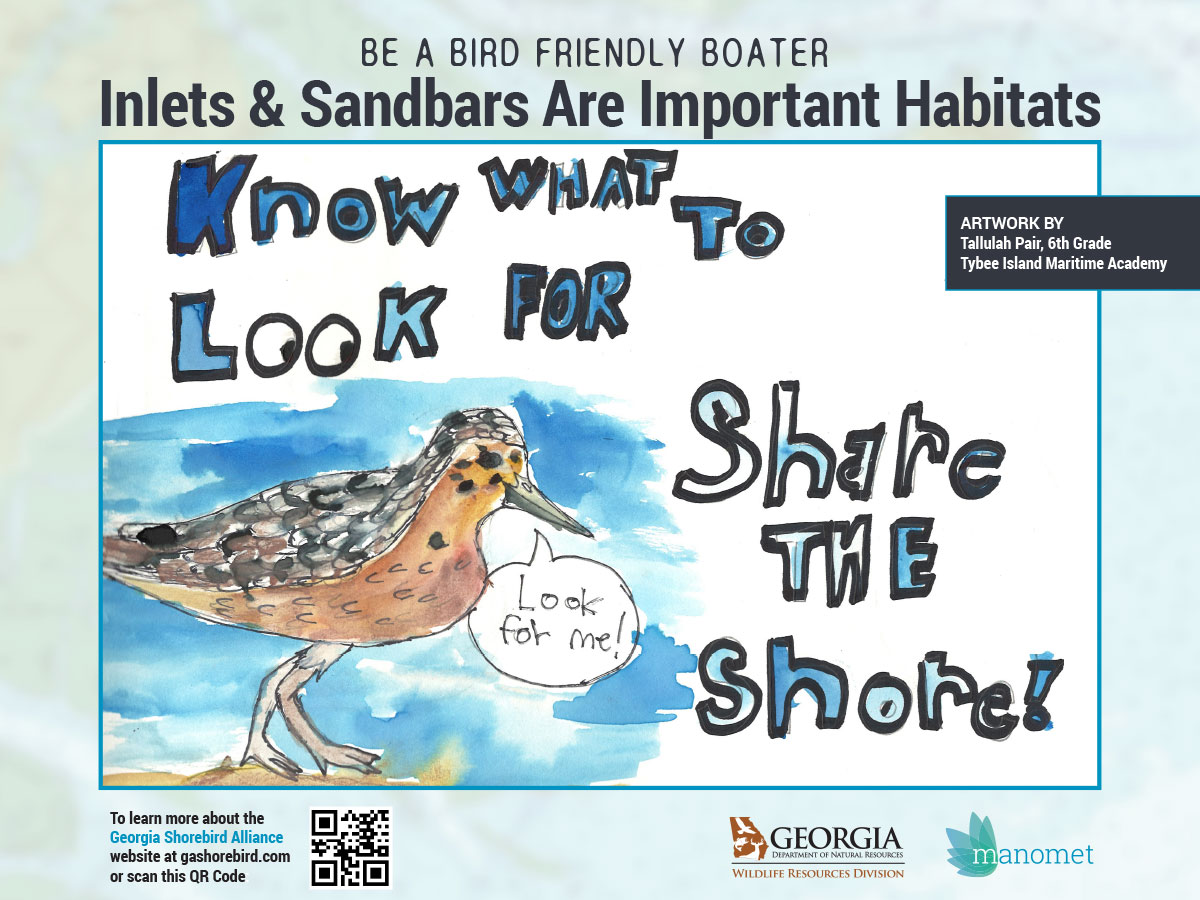

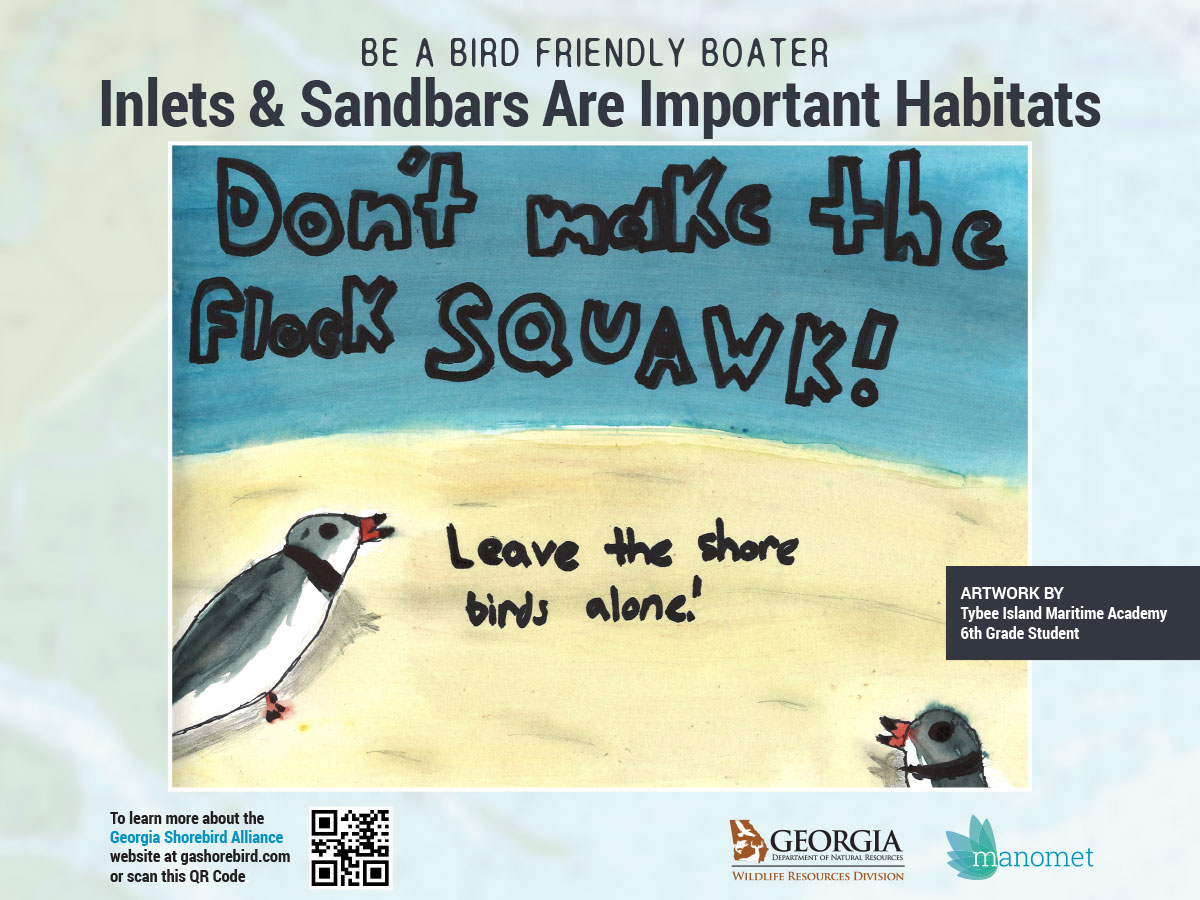
We would like to extend a special thank you to the Tybee Island Maritime Academy for the creativity and support of your students with this project- we appreciate the help!
Allie Hayser - SHOREBIRD TECHNICIAN, GEORGIA BIGHT SHOREBIRD CONSERVATION INITIATIVE





 Back to all
Back to all